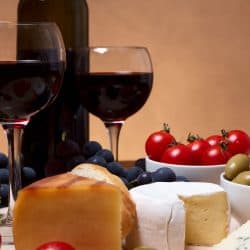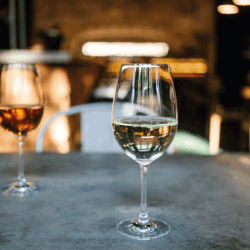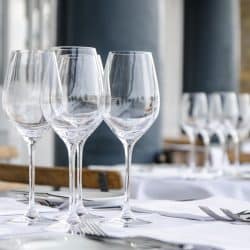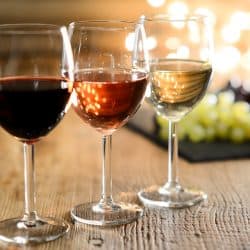There's something timeless and charming about a well-set dinner table. The complexities of table setting are difficult to remember, though, especially if you don't any experience creating a fancier table. As you're bringing out your best china, it's easy to wonder: should the wine glass be on the left or right of your guests' plates? We've reviewed the etiquette to get the answer for you.
When you set a dinner table, your water and wine glasses should all be placed in the upper right corner of your display. Keep your water glass closer to the guest than your wine glasses for ease of access.
To make matters more complicated, there are additional rules applying to the position of a white wine glass over a red wine glass and so on. In this guide, we'll discuss the topic in greater detail. So, if you're looking to create a classic fine dining experience for your friends and loved ones, read on!

Should The Wine Glass Be On The Left Or Right?
When you set a table with wine, place all of your wine glasses—and there should be two—on the right-hand side of your plates. You'll ideally want to keep these glasses confined to the upper right along with the water glass.
If you're feeling particularly fancy, you can select a taller, deeper glass for your guests' red wines and a narrower, shorter glass for their whites.
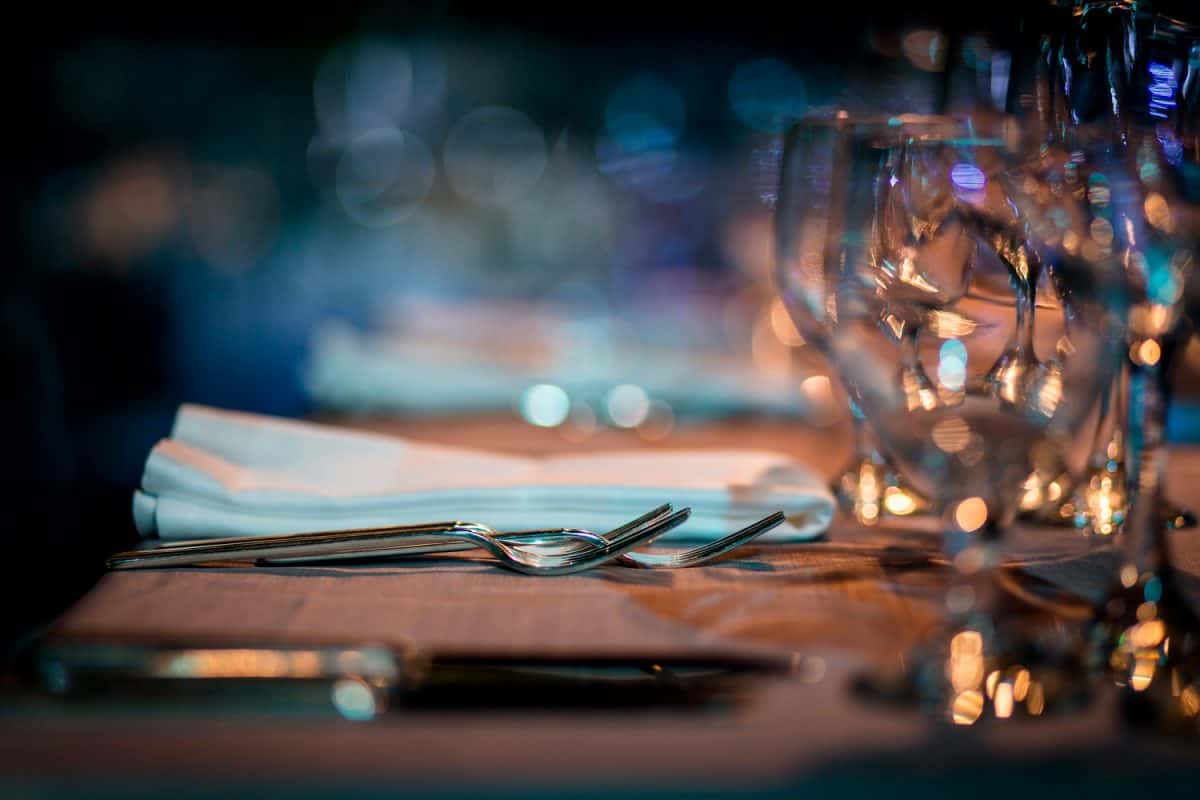
Make sure that the glass for white wine gets placed in front of the glass for red wine.
Do note, though, that there are occasions on which you may modify the placement of your wine glasses.
If you have a friend or guest who you know is left-handed, you can move their wine glasses to the left-hand side of their dinner settings.
So long as you place your china carefully, you can avoid and overlap between your guests' dinnerware while also taking your friend's comfort into consideration.
Read more: Are Expensive Wine Glasses Worth The Investment?
What is the Right Way to Set a Table?
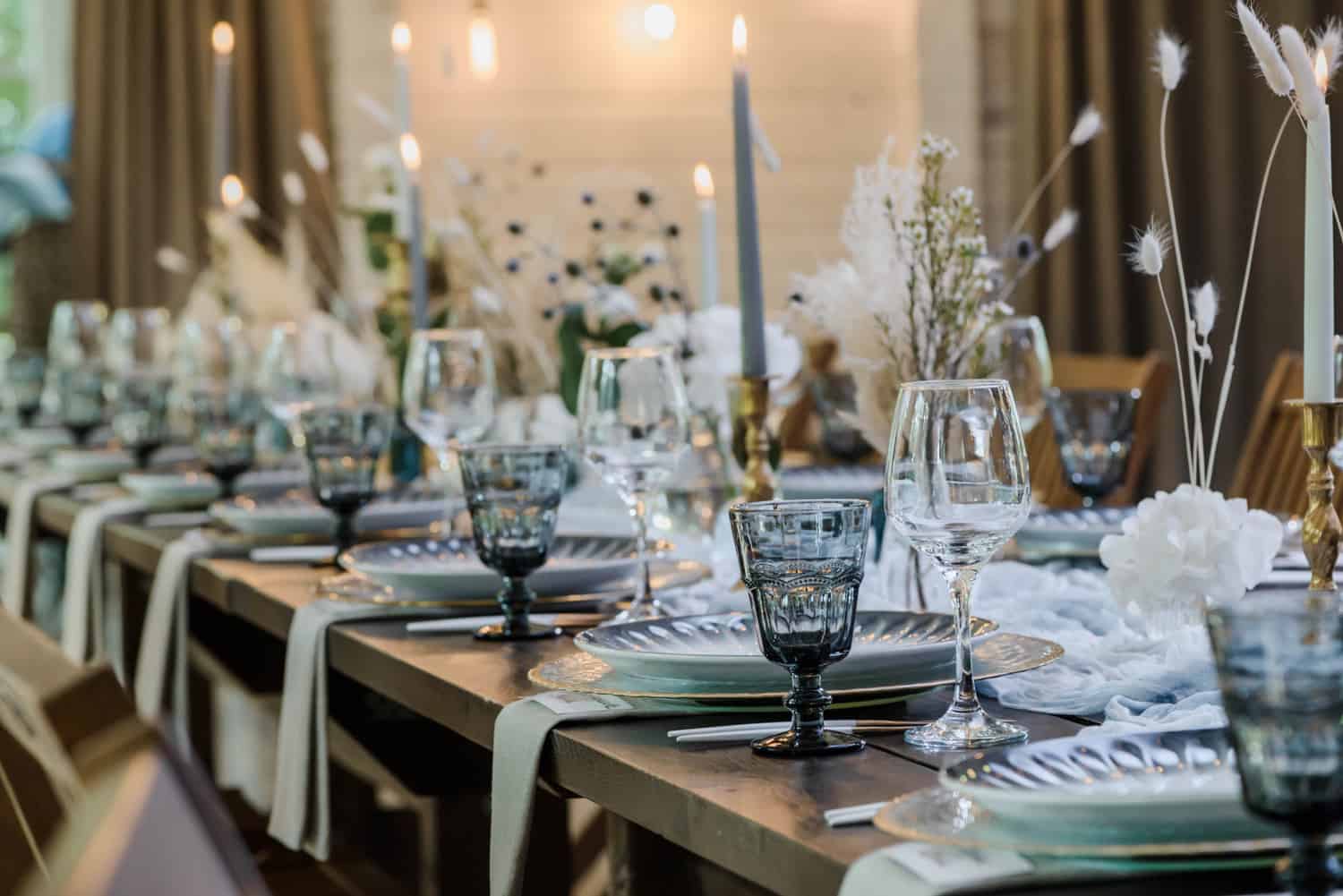
Setting your dinner table can be a laborious process, but the elegance at the end of the endeavor is often worth it. To successfully set a table, you'll need:
- A tablecloth
- Napkins
- Place cards (optional)
- Dinner plates
- Salad plates
- Bread plates
- Knives for bread and meat
- Forks for salad, entrees, and dessert
- Spoons for soup, entrees, and dessert
- Water, white wine, and red wine glasses
- Coffee cups and saucers
To begin setting up your table, you can take the following steps:
Laying the Tablecloth
Select a white tablecloth from your selection and make sure that it is as wrinkle-free as possible. Spread it out across your table, leaving no more than three inches of overhang on all sides.
Placing Your Dishes
If you have a charger plate, place it on the table before any other dishes. Your dinner plate should go on top of the charger plate or stand on its own, depending on the availability of your dishware.
Your salad plate, in turn, goes on top of your dinner plate. Finally, place your bread plate a few inches above your current plate arrangement, leaving it to the left of the dishware collection.
Placing Your Silverware
The location of your silverware will vary based on how much cutlery you have in play during dinner. There are staples to the arrangement, though, that make general placing a little easier.
To start, you can lay your butter knife horizontally across your guests' bread plates.
Dinner forks, if applicable, are placed to the left of your guests' dinner plates. The salad fork follows, as do any other forks used for more delicate purposes.
Your knives, in turn, go to the right of the dinner plate. If you have more than one knife in play, arrange the knives in descending length and sharpness.
Only once all of the knives are placed can you follow them up with the spoons. Your spoons, too, should lay in descending order based on their size and purpose.
Your dessert spoon does not go with the rest of your cutlery. Instead, these spoons lay above your dinner plate perpendicular to the rest of the silverware.
Setting Your Glasses
Your glassware sits in the upper right corner of your guests' seating arrangements. Keep your water glass closer to your guests than your wine glasses. Next, place your white wine glass.
Finally, your red wine glass should sit above the rest of your glassware, often delineating the border between one guest's plating and any arrangements you have in the middle of the table.
Folding Your Napkins
Your napkins can go in one of two places on the table. You can delicately fold your napkin and set it alongside your guests' forks.
Alternatively, you can arrange your napkin in an elaborate shape and set it on top of a guest's salad dish.
The Question of Place Cards
Place cards help your guests determine where it is you want them to sit. These cards come in handy at larger parties and can help you with crowd control.
You'll want to set each party's place card above their dessert spoon. You can elevate these cards with a stand or let them lie flat on the table.
If you do choose to elevate your place cards, be sure to write your guests' names on both sides of the card. This can make it easier for them to socialize with anyone they may not know.
Dessert and Coffee
It's usually in your best interest to have dessert brought in on a separate plate. However, you can position a dessert plate opposite your guests' wine glasses.
Coffee and coffee cups should receive a similar treatment—if they're not brought in separately, place your saucers on top of your dessert dishes and your coffee cups upside down on top of their saucers.
Read more: Can You Keep A Coffee Maker On All Day?
With Which Hand Do You Hold a Wine Glass?
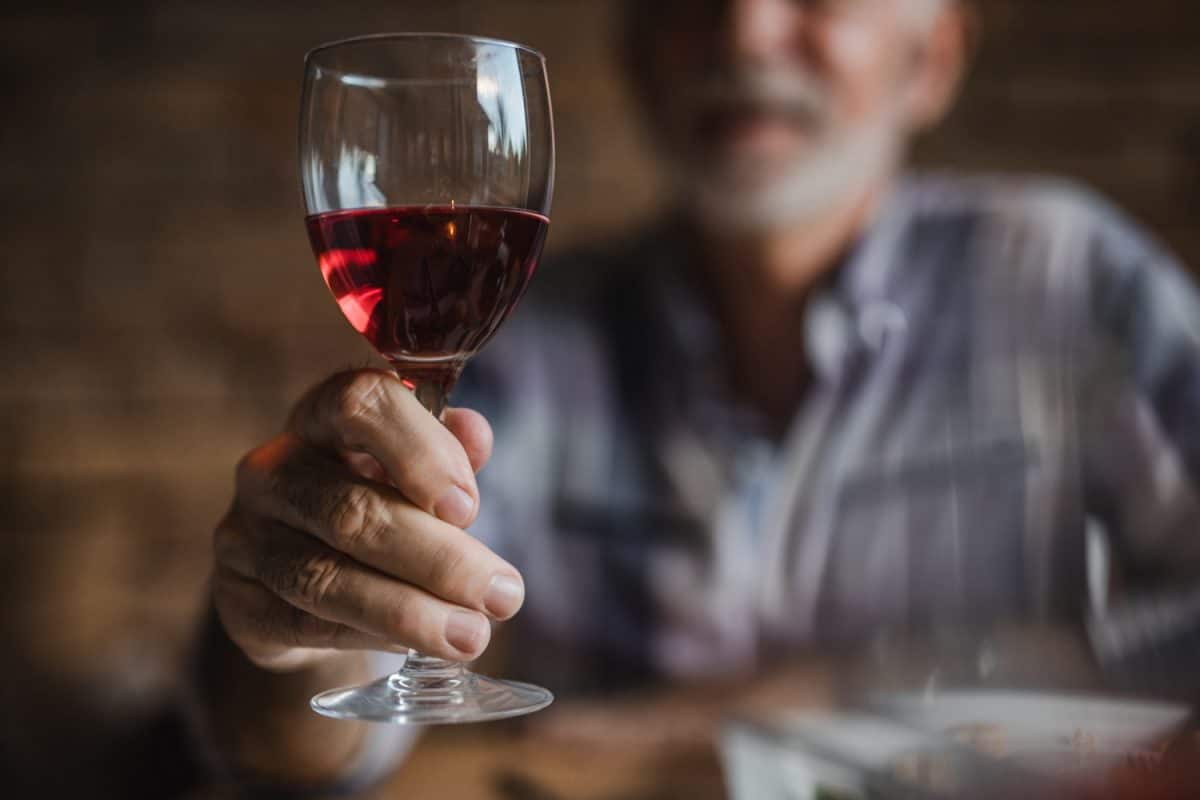
If you're attending a fancy dinner or hosting one yourself, wine glass etiquette doesn't stop at the table setting. You'll also want to handle your fine china with care.
When holding a wine glass, use your dominant hand. Reach out and hold the stem of your wine glass between your forefinger, middle finer, and thumb. The rest of your fingers should sit on your wine glass's base.
You can alternatively hold a glass of wine by:
- Pinching the stem
- Pinching the base
- Securing the stem between your thumb and forefinger
- Using the base as a pseudo-handle
When you hold a wine glass by its stem or base, you keep the wine cooler for a longer period of time.
What Side Do Napkins Go On?
There are two ways to place a table's napkins. If you choose not to set your forks on top of your napkin, then the napkin needs to go to the far left of your fork. This usually sets your napkin on the left side of your dinner plate.
This placement, however, only works if you have a single fork in play. If you have more than one fork, you'll want to fold your napkin so that you can elegantly set it on top of a guest's dinner plate.
Why Do You Put the Fork on the Left Side?
When you arrange your silverware alongside your dishes, you'll want to make sure your forks, spoons, and knives are all on the appropriate sides of the table.
In normal situations, the spoon and knives go on the right side of a diner's plate. The fork, in turn, goes on the left-hand side.
This is the arrangement regardless of an attendee's dominant hand, and often for good reason.
Western eaters tend to use the cut and switch method to address their food.
Because so many Westerners are right-handed, they'll take up their knives in their right hand and use their fork—positioned on the left—as a stabilizer. Only when they're ready to take a bite will they switch their fork over to their right hand.
As such, it's easiest to place your forks on the left-hand side of a diner's plate. This way, your guests can easily cut into their food without having to rearrange your silverware.
Do You Pass Food to the Left or Right?
To keep a table clean and dishes from overwhelming one another, you'll want to pass food counterclockwise around the table you're sitting at.
This means passing your food to the right. You can, however, always pass food to the person sitting immediately next to you, regardless of whether they're sitting to your left or right.
Passing food directly over the table, while convenient, tends to create a disruptive atmosphere at the table.
If your guests aren't particularly careful, some of your dishware may end up chipped or otherwise damaged.
Setting the Table: What You Need to Know
Creating a well-set dinner table does take a bit of research. Once you know what wine glass goes where and how to use all the silverware, though, the effect can be stunning.
A full dinner table makes your guests feel like they're sitting down for the meal of a lifetime.
If you're in the mood to spoil the people you care about, take the extra time to work out the fine details of your table presentation.
At the end of the night, both you and your guests will come away with an idea of what it's like to live in the world of fine dining.

